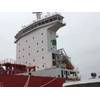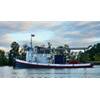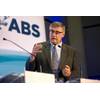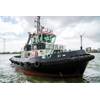Renewable Diesel Project for Passenger Ferry Underway in California
In partnership with Catalina Express and Harbor Breeze Cruises, the Port of Los Angeles will soon begin emission-reduction technology demonstration projects for specialized harbor craft, thanks to a $31 million grant awarded by the California Air Resources Board (CARB).
The Los Angeles Marine Emission Reduction (LA MER) project will involve the design, construction and launch of a passenger ferry with Tier 4 engines and potentially a CARB-verified, U.S. Coast Guard-approved diesel particulate filter.
Operated by Catalina Express, this new ferry will use renewable diesel and replace three smaller ferries using Tier 2 and Tier 3 engines, enhancing the efficiency of regional ferry service and also increasing emissions benefits.
Additionally, in partnership with Harbor Breeze Cruises, the LA MER project will entail the design, construction and deployment of two zero-emission capable excursion boats. The vessels are expected to be able to operate a minimum of 30% of the time in zero-emission mode, with some trips operating as much as 100%, depending on route length and other factors.
The project will also look at workforce development needs related to training harbor-craft workers in new engine technologies and advanced battery-electric solutions for tugs, ferries and pilot boats operating in the San Pedro Bay.
Grant partners Catalina Express and Harbor Breeze Cruises will each contribute a $15 million match toward their respective demonstration program. The Los Angeles Harbor Commission has approved $650,000 of Port of Los Angeles funds to help fund the project evaluation study. The Port of Long Beach will contribute approximately $340,000 to support the Port of Los Angeles' technology evaluation in coordination with harbor craft operators, regulators, engine manufacturers, technology developers and the U.S. Coast Guard.
LA MER is part of California Climate Investments, a statewide initiative that puts billions of cap-and-trade dollars to work reducing greenhouse gas emissions, strengthening the economy, and improving public health and the environment – particularly in disadvantaged communities.













